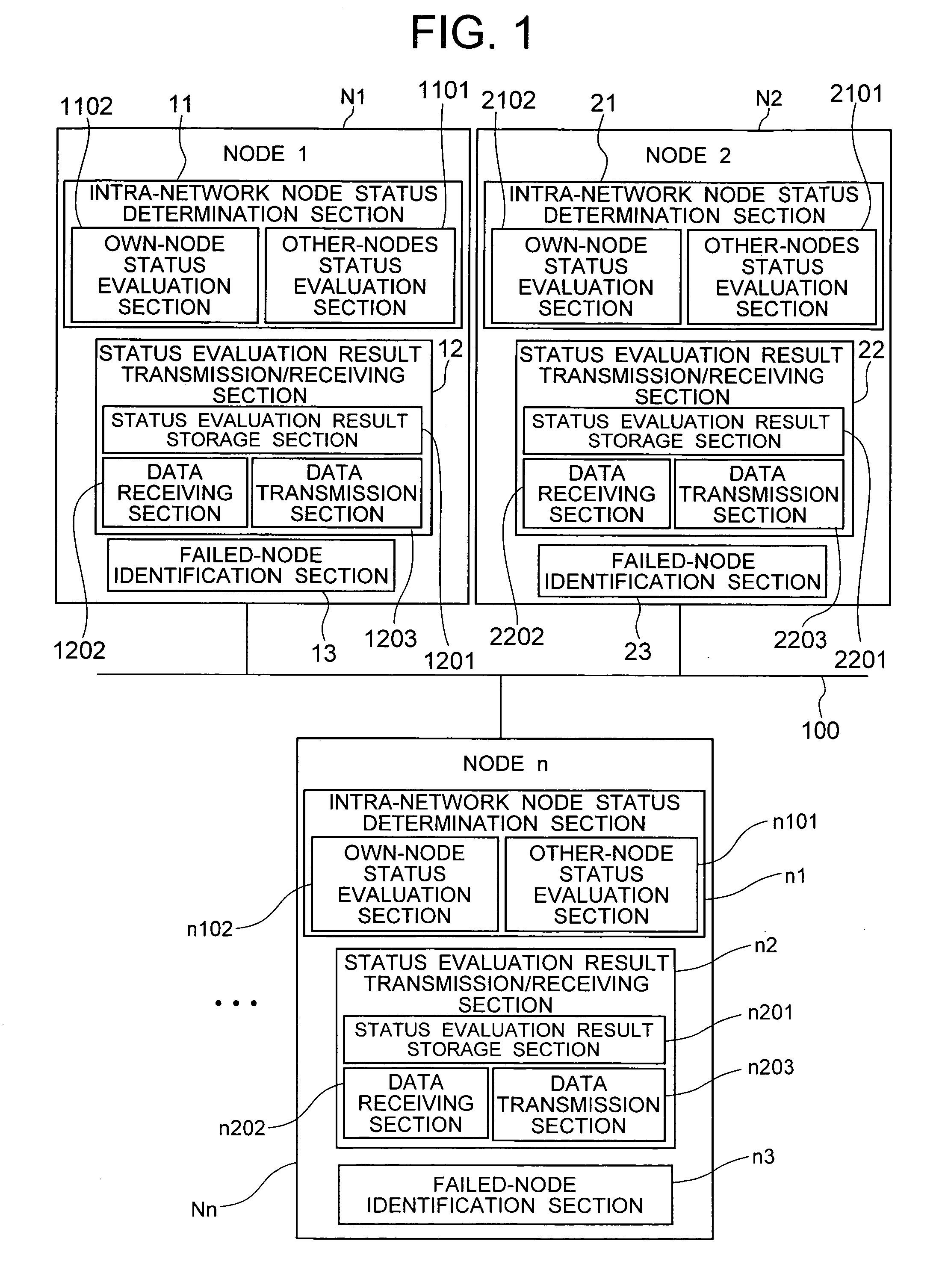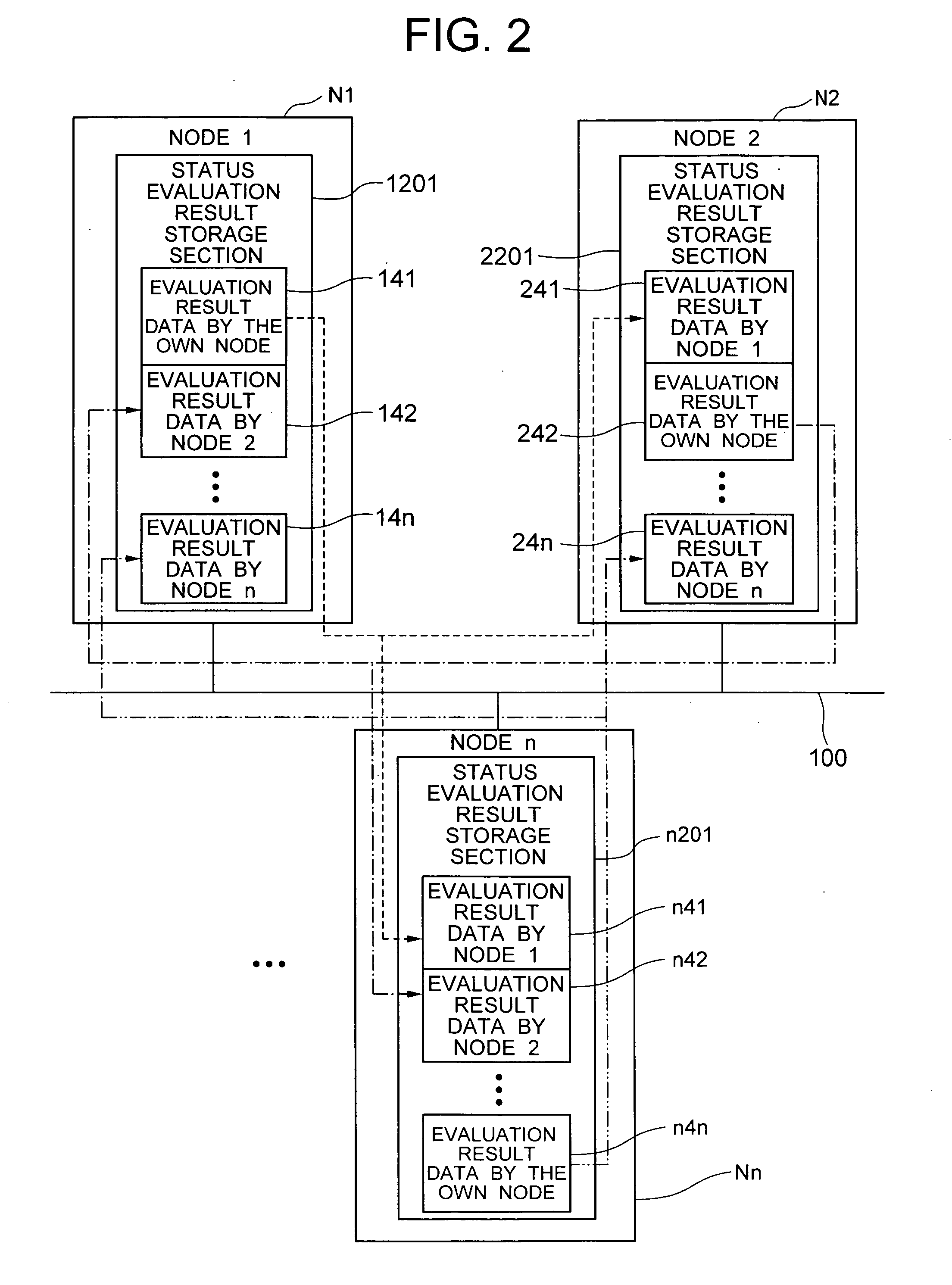Vehicle control system
a control system and vehicle technology, applied in the field of vehicle control systems, can solve the problems of increasing system costs, affecting and being unable to continue monitoring for failed nodes in the system, so as to improve the development efficiency of control application software and reduce costs
- Summary
- Abstract
- Description
- Claims
- Application Information
AI Technical Summary
Benefits of technology
Problems solved by technology
Method used
Image
Examples
example 1
[0062] First, a basic configuration of the vehicle control system according to the present invention will be described with reference to FIGS. 1 to 4. As shown in FIG. 1, the vehicle control system according to the present invention consists of multiple nodes—namely, node 1 (N1), node 2 (N2), . . . , node n (Nn)—which are connected via a network 100. The nodes are processing units connected to a network and capable of communicating information via the network. Specifically, they include various electronic control units, actuator drivers, and sensors mounted on a vehicle. The network 100 is a communication network capable of multiplex communication as well as broadcasting which involves transmitting the same content simultaneously from a node to all the other nodes connected to the network.
[0063] Each node, Ni, N2, . . . , or Nn (hereinafter referred to as Nx) has a node status determination section x1 (11, 21, . . . , or n1), status evaluation result transmitting / receiving section ...
example 2
[0128] Next, description will be given of an example in which the node status determination according to the present invention is applied to a vehicle control system.
[0129]FIG. 23 shows an example of a vehicle control system. According to this example, a vehicle 1 is equipped with steering and brake backup mechanisms, but the same configuration may be used for vehicles which are not equipped with steering and brake backup mechanisms.
[0130] A vehicle control system 901 according to this example is equipped with an integrated vehicle motion control ECU 910 which centrally controls vehicle motion based on signals from a steering angle sensor Sen1 which measures a rotation angle of a steering wheel 951, brake pedal position sensor Sen2 which measures a depression of a brake pedal 952, accelerator pedal position sensor Sen3 which measures a depression of an accelerator pedal, and sensors (e.g., an acceleration sensor, yaw rate sensor, and wheel speed sensor: not shown) which detect veh...
example 4
[0169] In the above examples, all the nodes on the network identifies (ID process) any failed node among all the other nodes on the network or all the other nodes in the group based on their own status decisions.
[0170] In addition to this highly reliable technique, it is also possible to share the ID process with the other nodes on the network or the other nodes in the group to further reduce the CPU processing load. Specifically, in a group of n nodes (including a case in which all the nodes in a network belongs to a single group), one node performs the ID process of only m nodes (n>m>1) and transmits results to the other nodes and receives ID results of the remaining nodes from the other nodes. Hereinafter this technique is referred to as a “decision broadcasting method.” Incidentally, this method become the same as the above example when m=n.
[0171]FIG. 35 is a flowchart showing how to implement a node status (failed-node) monitoring function by the decision broadcasting method....
PUM
 Login to View More
Login to View More Abstract
Description
Claims
Application Information
 Login to View More
Login to View More - R&D
- Intellectual Property
- Life Sciences
- Materials
- Tech Scout
- Unparalleled Data Quality
- Higher Quality Content
- 60% Fewer Hallucinations
Browse by: Latest US Patents, China's latest patents, Technical Efficacy Thesaurus, Application Domain, Technology Topic, Popular Technical Reports.
© 2025 PatSnap. All rights reserved.Legal|Privacy policy|Modern Slavery Act Transparency Statement|Sitemap|About US| Contact US: help@patsnap.com



